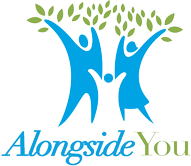Grief is a deeply personal and human experience. We all relate to it in unique ways. How we were raised—along with social, cultural, faith-based, and family messages—greatly influences how we process and express the grief we experience.
What Is Grief?
Grief is the emotional response to any kind of loss. This can include the passing of a loved one, the loss of a job, a relationship, or even a dream. Loss comes in many forms, and it’s important to remember that your loss matters.
Acknowledging your loss allows you to begin exploring how you want to relate to your grief. While grief may look different from person to person, it is a universal human experience. Expressing grief in your own way is not only valid—it’s part of being human.
How Do I Relate to Grief?
Grief can be confusing and overwhelming. I often remind clients that grief is a journey, and there is no “right” way to feel or respond. Emotions such as sadness, fear, shame, and guilt may come up—sometimes all at once. Interestingly, grief can also bring unexpected feelings like joy or gratitude. This is all a normal part of the grieving process.
Two theories I’ve found especially helpful in working with grief are the Continuing Bonds theory and the Dual Process Model:
Continuing Bonds
The Continuing Bonds theory was introduced by Klass, Silverman, and Nickman. It centers around maintaining a relationship with someone after they have died. Ask yourself:
• What does that connection look like now?
• How do I want to relate to this loss?
• What role does ceremony or ritual play in this connection?
Continuing Bonds encourages us to explore ways to stay connected emotionally, spiritually, or symbolically with the person we’ve lost. For some, continuing to speak to their loved one, writing letters, or creating meaningful rituals is a comforting practice.
Dual Process Model
The Dual Process Model of Grief, developed by Stroebe and Schut, views grief as a dynamic and non-linear experience. It suggests that we oscillate between two states:
• Loss-oriented (focused on the pain and emotions of the loss)
• Restoration-oriented (focused on adapting and rebuilding life without the person or thing we’ve lost)
While this back-and-forth can feel frustrating or disorienting, it’s actually a healthy way to process grief. Emotional flexibility allows space to feel deeply while also slowly re-engaging with life. This model normalizes the mixed emotions of grief and helps us identify which feelings are most present and need attention.
The Role of Ceremony
Ceremony can be a powerful resource in grief. It offers a structured and meaningful way to honor the loss, mark transitions, and express emotions. Ceremonies are a universal human tradition, practiced across cultures, ages, and spiritual beliefs.
I often encourage clients to explore their family histories and cultural backgrounds to discover what types of ceremonies or rituals might help support them in their grieving process.
Common Humanity and Self-Compassion
A vital part of working with grief is learning to show compassion to yourself.
Dr. Kristin Neff’s work on Self-Compassion highlights “Common Humanity” as a key element. This concept reminds us that although we are in pain, we are not alone. Others struggle just like us, and knowing this can create a sense of connection even in our most isolated moments.
Recognizing that others have walked similar paths—either in the past or right now—can help you feel less alone. In times of deep emotional pain, that sense of belonging can be incredibly healing.
Final Thoughts
Grief is hard. It’s messy. It’s deeply human. But remember this:
Your loss matters. And you are not alone.
We’re here for you. Please connect with us if you would like to speak with a counsellor about your grief.
Recommended Resources
Books
- It’s OK That You’re Not OK – Megan Devine
- Self-Compassion: The Proven Power of Being Kind to Yourself – Dr. Kristin Neff
- Finding Meaning: The Sixth Stage of Grief – David KesslerEmbers: One Ojibway’s Meditations – Richard Wagamese
Websites
- www.refugeingrief.com
- grief.com – Finding Meaning by David Kessler
Support
- British Columbia Bereavement Helpline
www.bcbh.ca

